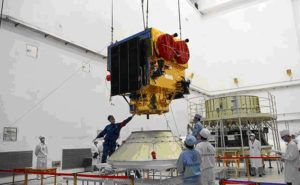To Keep An Eye On India, Two Pak Spy Satellites Launched By China
The remote-sensing PRSS-1 satellite can carry out day and night monitoring.
New Delhi: China today launched two satellites for Pakistan that, among other things, are meant to keep an eye on India. One of them — the PRSS-1 — is a remote sensing satellite built by China. The other — PakTES-1A – is Pakistan’s indigenously developed scientific experiment satellite. The two were launched this morning on Chinese rocket Long March-2C from the Jiuquan Satellite Launch Center in northwest China.
The remote-sensing PRSS-1 satellite can carry out day and night monitoring, and it has viewing capacity even in clouded conditions.
The satellite would be used for land and resources surveying, monitoring of natural disasters, agriculture research, urban construction and to provide remote sensing information for China’s “Belt and Road” mega-project. Scientists said it would also help Pakistan keep watch on India.

The launch of the satellites marks yet another instance of Pakistan’s space cooperation with China, its Number One ally. In August 2011, China had launched PAKSAT-1R, a communication satellite. Pakistan, which already had five satellites in space, lacks heavy duty launchers and satellite fabrication facilities.
India is way ahead of Pakistan in space technology, with 43 operational satellites in space. India also has the radar imaging satellites with all-weather surveillance capability. India used images gathered from its satellites for the surgical strikes it carried out in 2016.

Three years ago, Pakistan opted out of India’s project for a “South Asia Satellite”. Prime Minister Narendra Modi’s “gift” to SAARC countries was an extension of his “Sab Ka Saath Sab Ka Vikas” ideology to India’s neighbourhood, where China is extending its influence.
After a planning meet for the satellite in June 2015, Islamabad opted out, suggesting it had its “own space programme”.
The Rs. 235-crore communication satellite — launched in May last year — caters to Nepal, Bhutan, Maldives, Bangladesh, Sri Lanka and Afghanistan.
The PRSS-1 is the first optical remote sensing satellite China sold to Pakistan. It is the 17th satellite developed by the China Academy of Space Technology for an overseas buyer.
Today’s launch is the 279th mission for the Long March rocket series. Long March-2C rockets are mainly used to send satellites into low Earth or Sun-synchronous orbits. It is also the first international commercial launch for a Long March-2C rocket in nearly two decades after it carried Motorola’s Iridium satellites into orbit in 1999.
Courtesy: MSN

